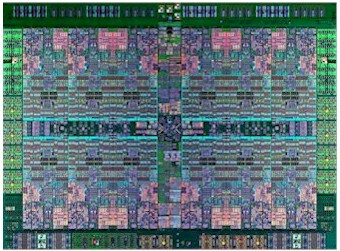Big Blue Chases Clouds, Big Data With Power8 Systems

IT "infrastructure matters in the new era of computing," IBM managers argued in the formal launching of its Power Systems servers based on its Power8 processor, taking aim at big data applications and cloud computing.
IBM engineers also announced a Power8 interface advance designed to put accelerators closer to the processor. IBM is touting the Power Systems platform as the first to specifically address big data analytics and cloud computing economics.
Doug Balog, general manager of IBM's Power Systems division, said the company has invested $1 billion over the last year in Linux-based Power Systems development to ease, among other things, the porting of applications from X86 to Power platforms. The Power8 systems are the culmination of three years and $2.4 billion in investments that IBM has made in chip design and manufacturing, systems design, and system software development.
The big data market continues to attract vendors as the amount of data generated begins to create bottlenecks. Balog put the total at 2.5 billion gigabytes of data per day, with 80 percent of that data being unstructured. IBM is forecasting that data growth will jump 800 percent over the next five years.
A key aspect of IBM's big data and cloud thrust is computing horsepower. Power Systems runs queries "concurrently and faster across multiple cores with more threads per core," Balog said during an IBM webcast on Monday launching the new machines. The system also includes up to 1 TB of memory "that is close to the processor," as Balog put it.
Arvind Krishna, general manager of IBM systems development and manufacturing unit, described the Power8's key innovation, the Coherent Accelerator Processor Interface, or CAPI. The port allows accelerators like GPUs, flash memories, and FPGAs to connect directly to the processor while sharing the same address space.
Krishna said the architecture boosts performance by greatly simplifying how these accelerations are attached to the Power8 processor. IBM's "flexible infrastructure" strategy is based on Power8 clusters built around the CAPI interface, Krishna stressed.
Krishna added that IBM worked with graphics chip specialist Nvidia to develop Java acceleration on a GPU designed to speed up analytic Java code. One data analysis application is new customer segmentation capabilities, he said.
The Power System server also includes an I/O network that "brings big data to compute resources in real time," resulting in a four-fold increase over the previous generation in accessing "data in motion," Balog claimed.
IBM said the new Power Systems are aiming machines with one and two sockets, what it calls the Power S-Class, at cloud computing. The company is guaranteeing 65 percent sustained system utilization, which it claims is higher than X86 system utilization levels.
Power Systems managers also stressed a big data variation on processing speed, or real-time analytics, that relies on predictive or cognitive algorithms to make faster connections within data sets. Hence, it claims it Power8-based platform "reinvents" big data.
Bob Picciano, senior vice president for information and analytics at IBM, said the new Power8 architecture includes a four-fold increase in threads per core, 30 percent more memory than X86 designs, and a 170 percent increase in memory bandwidth. Rob High, chief technology officer at IBM’s new Watson Group, added that the company's cloud effort would integrate its Watson on Power computing development cloud. The development cloud platform-as-a-service includes tools, tools kits, and APIs, High said.
EnterpriseTech gave you a preview of the Power S-Class machines last week that actually had more detail than the IBM announcement today. That’s the way it goes sometimes. We will be gathering up pricing information on the Power S-Class servers and seeing how they stack up to X86, Sparc, and Itanium alternatives.
Related
George Leopold has written about science and technology for more than 30 years, focusing on electronics and aerospace technology. He previously served as executive editor of Electronic Engineering Times. Leopold is the author of "Calculated Risk: The Supersonic Life and Times of Gus Grissom" (Purdue University Press, 2016).










